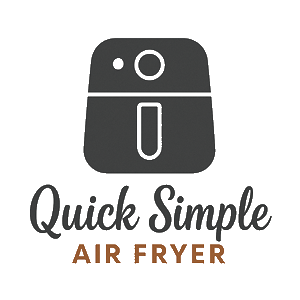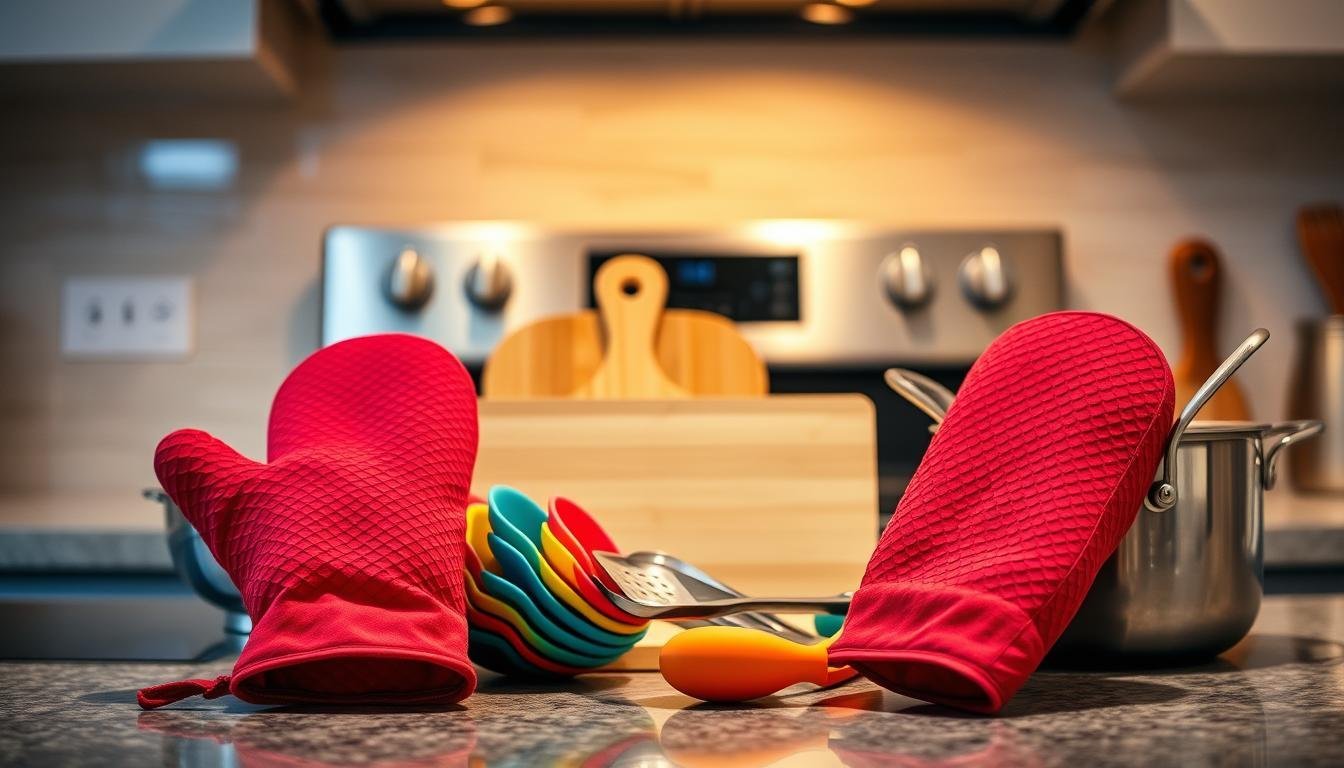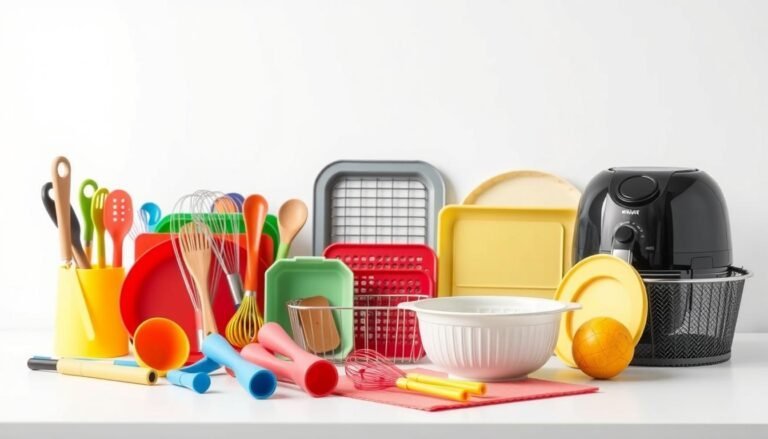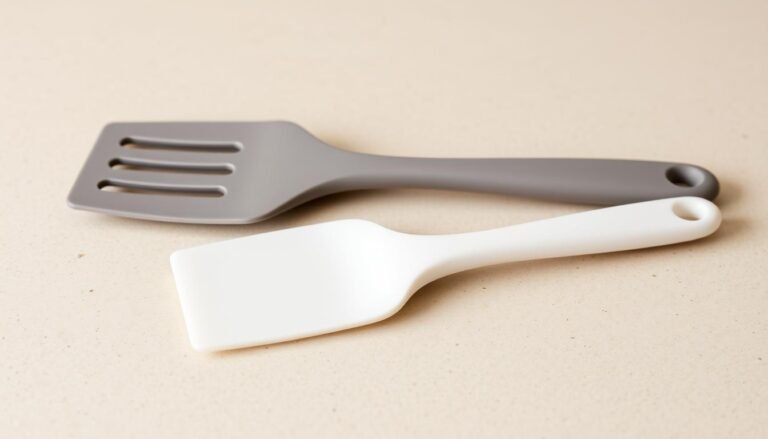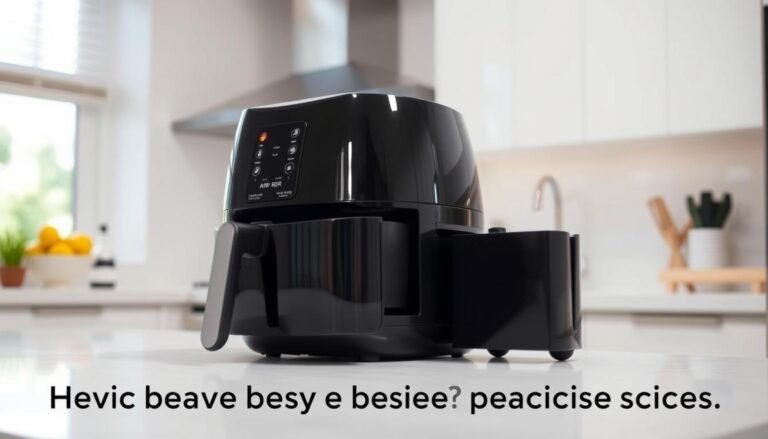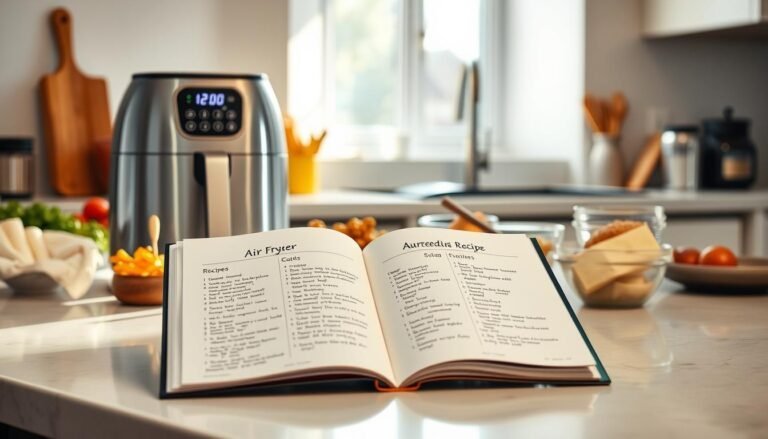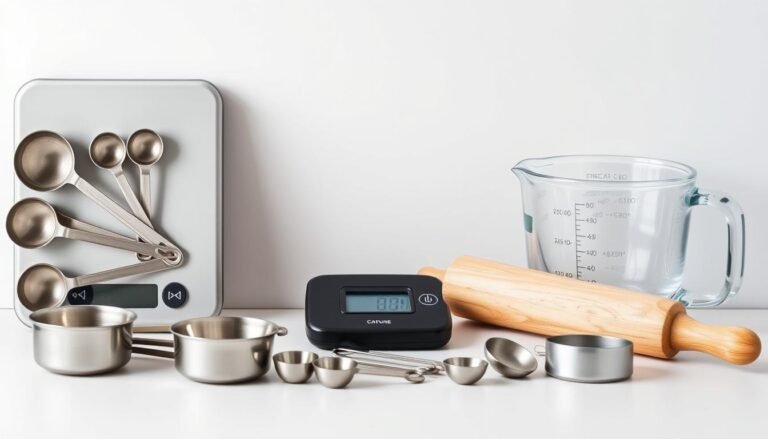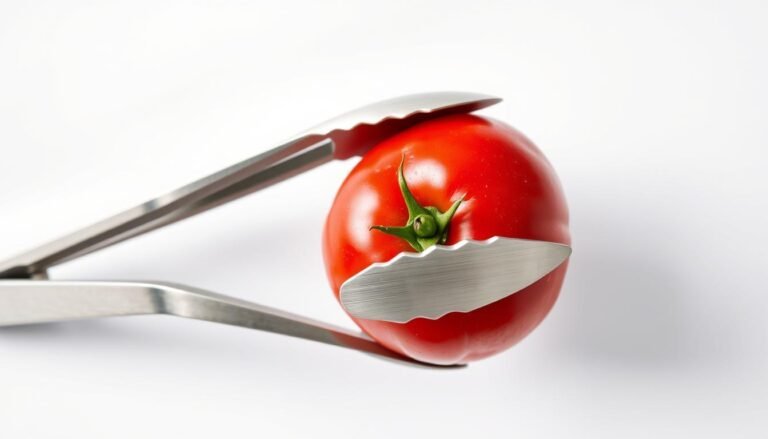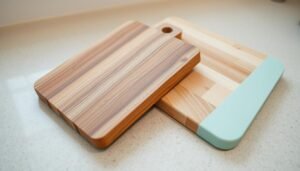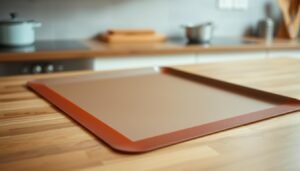Disclosure: This Post Contains Affiliate Links; We earn a commission on purchases.
Handling hot kitchen items can be dangerous without the right tools. Using dish towels to manage hot pans or boiling water can cause serious burns. It’s time to switch to safer, more reliable kitchen accessories.
Oven mitts and pot holders protect your hands from heat. They might look similar, but they serve different purposes in the kitchen.
Choosing the right one is key for kitchen safety and efficiency. In this article, we’ll look at the differences between oven mitts and pot holders. This will help you decide what’s best for your kitchen.
Key Takeaways
- Using the right kitchen accessories can significantly reduce the risk of burns.
- Oven mitts and pot holders serve the same general purpose but have different designs and uses.
- Understanding the differences between oven mitts and pot holders is essential for kitchen safety.
- The right choice between oven mitts and pot holders depends on specific kitchen tasks and personal preference.
- Both oven mitts and pot holders come in various materials, each with its own advantages.
Understanding Oven Mitts and Pot Holders
To safely use the kitchen, knowing about oven mitts and pot holders is key. They keep your hands safe from burns when you handle hot dishes. But they do this in different ways.
What Are Oven Mitts?
Oven mitts cover your hand, wrist, and arm. They protect you from burns. They are bigger than pot holders, great for pulling out big pans.
For more on the best oven mitts, see this review.
Oven mitts are made of materials like silicone. This material is good at keeping heat out and is flexible. Some have special grips to stop things from falling.
What Are Pot Holders?
Pot holders are small, square pieces of material. They have a loop for hanging and sometimes a pocket. They are easy to use for small hot dishes or lids.
They are not as big as oven mitts but are good for tasks needing more skill. Like adjusting a pot lid or handling small hot items.
Some great things about oven mitts are:
- Comprehensive protection for your hands and wrists
- Versatility in handling large or heavy hot dishes
- Variety in materials and designs, such as silicone oven mitts
Pot holders have their own benefits:
- Dexterity and precision when handling hot items
- Compactness, making them easy to store
- Quilted designs for added insulation, like quilted pot holders
Key Differences Between Oven Mitts or Pot Holders
To choose between oven mitts and pot holders, look at their design, use, and heat protection. Both protect hands from burns when handling hot dishes. But they differ in how much they cover, how well you can move, and their uses.
Design and Coverage
Oven mitts cover your hand and wrist fully, protecting you from heat. They are thicker and more padded than pot holders. This makes them great for very hot dishes.
Pot holders are smaller and less padded. They let you grip hot items more precisely.
Key design features of oven mitts include:
- Extended coverage for the hand and wrist
- Thicker padding for enhanced heat protection
- Variety of materials for different heat resistance levels
Pot holders offer:
- Compact design for precise handling
- Flexibility for gripping various shapes and sizes
- Ease of storage and convenience
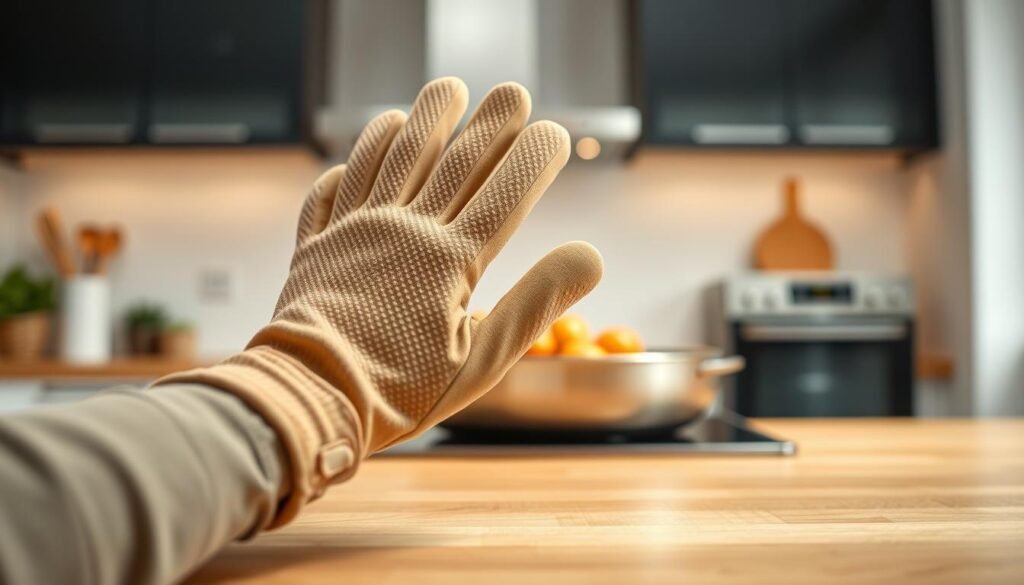
Heat Resistance Capabilities
Oven mitts and pot holders are both heat resistant. But, their heat resistance depends on the materials. Heat Resistant Kitchen Gloves and Oven Gloves are often used for oven mitts. They can handle high temperatures but are not completely heatproof.
Factors influencing heat resistance include:
- Material composition (e.g., silicone, cotton, or synthetic fibers)
- Thickness and density of the material
- Any additional treatments or coatings for enhanced heat resistance
Dexterity and Grip
Oven mitts are less dexterous than pot holders because of their size. But, they give a strong grip on big, heavy items. Pot holders are more flexible and precise but may not grip as securely.
Versatility in the Kitchen
Oven mitts are good for handling large, hot dishes. They are often used to take dishes out of the oven. Pot holders are better for precise tasks like gripping small hot items or adjusting cookware on the stovetop.
In conclusion, knowing the differences between oven mitts and pot holders is important. They differ in design, heat resistance, dexterity, and versatility. By understanding these differences, you can choose the right tool for your kitchen tasks. This improves your cooking experience and safety.
Types and Materials
Oven mitts and pot holders come in many types and materials. This variety helps homeowners pick the best for their kitchen needs.
Oven Mitt Varieties
Oven mitts have different types, each with its own benefits.
Silicone Oven Mitts
Silicone oven mitts have a slip-resistant grip and can handle high heat. They’re also easy to clean.
Fabric and Quilted Oven Mitts
Fabric and quilted mitts are more traditional. They use cotton for a comfy fit. The quilting adds extra insulation.
Heat Resistant Kitchen Gloves
Heat-resistant gloves protect hands and forearms. They’re great for tasks needing more coverage.
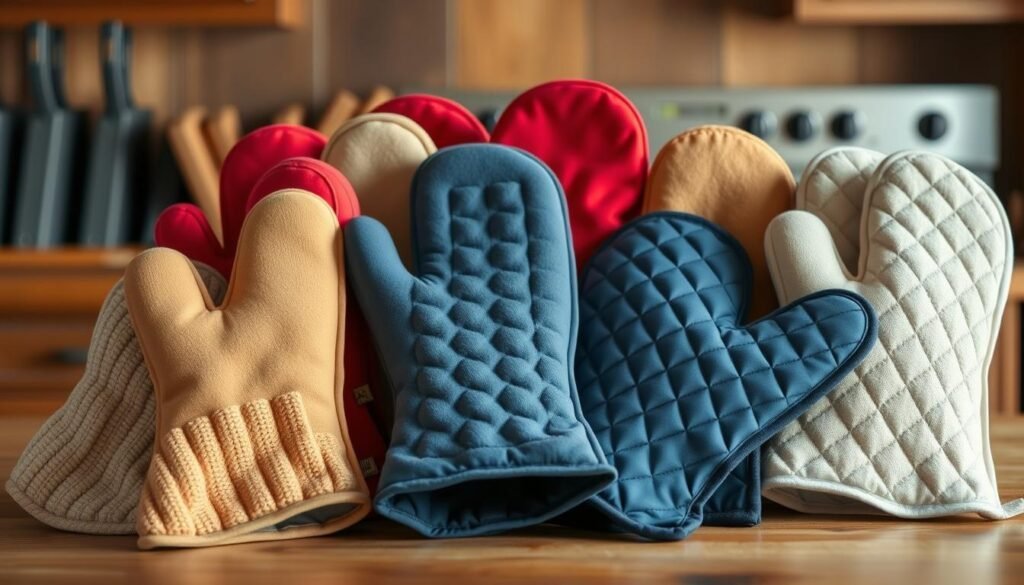
Pot Holder Varieties
Pot holders also have different types for various kitchen needs.
Traditional Quilted Pot Holders
Quilted pot holders use fabric layers for heat insulation. They’re a classic choice for protecting surfaces.
Silicone Pot Holders
Silicone pot holders are flexible and heat-resistant. They’re also easy to clean and versatile for kitchen tasks.
Specialty Pot Holders
Specialty pot holders are for specific tasks. They handle small dishes or high temperatures.
Material Considerations for Safety
Material is key for safety in oven mitts and pot holders. Look for heat resistance, durability, and comfort.
- Cotton and other fabrics are breathable and comfy but less heat-resistant than silicone.
- Silicone is heat-resistant and durable but less comfy for long wear.
- Quilted materials add insulation but are bulkier.
Knowing these material facts helps homeowners choose wisely for their kitchen linens.
When to Use Each Option
Knowing when to use oven mitts versus pot holders can make cooking safer and better. The right choice depends on the cooking task, heat level, and what you like best.
Best Uses for Oven Mitts
Oven mitts are great for handling hot dishes or cookware straight from the oven or stovetop. They protect your hands well. They’re perfect for:
- Removing hot casseroles or roasts from the oven
- Handling large, heavy pots or pans
- Cooking methods that involve high temperatures, such as grilling or broiling
Oven mitts, like cooking gloves, let you handle cookware carefully and safely.
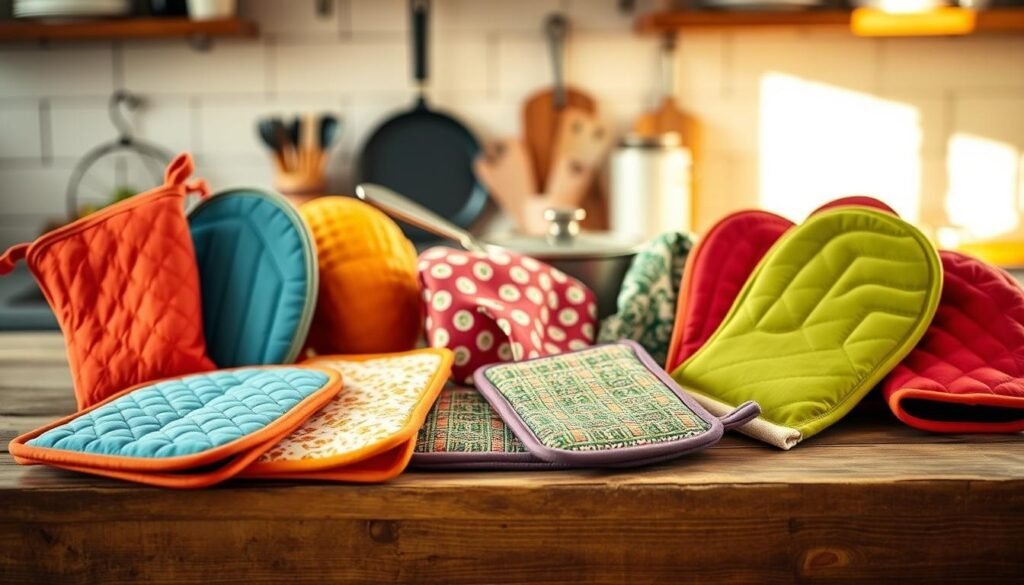
Best Uses for Pot Holders
Pot holders are better for lighter tasks or smaller cookware. They’re great for:
- Handling smaller pots or pans
- Protecting countertops from heat damage
- Situations where oven mitts might be too bulky
Pot holders are useful kitchen accessories for many cooking tasks.
Situations That Call for Both
Having both oven mitts and pot holders is useful in some cases. For example, when you’re cooking a meal that needs both high-heat grilling and careful handling of small dishes. Having both can be helpful.
Safety Considerations
Always put safety first, whether you use oven mitts or pot holders. Make sure they’re made to resist heat and are in good shape. Check your oven mitts and pot holders often for damage. Replace them if needed to avoid accidents.
Conclusion
It’s important to know the difference between oven mitts and pot holders. They are both key kitchen linens. They protect us from burns when we handle hot dishes.
Oven mitts cover more and are great for big, hot dishes straight from the oven. Pot holders are good for smaller pots and pans on the stove or when serving.
It doesn’t matter if you like oven mitts or pot holders. Just make sure to keep them away from heat but easy to find. Most have a loop for hanging, making storage simple and keeping your kitchen tidy.
Using oven mitts and pot holders safely is all about being careful and aware. By picking the right one for the job and storing them right, you can avoid kitchen accidents.
FAQ
What is the main difference between oven mitts and pot holders?
Are silicone oven mitts safe to use at high temperatures?
Can I use quilted pot holders for handling extremely hot cookware?
How do I choose between oven mitts and pot holders for a specific cooking task?
What materials are commonly used for making oven mitts and pot holders?
How can I ensure my oven mitts or pot holders remain effective and safe to use?
Are there any specific safety considerations when using oven mitts or pot holders?
Can I use oven mitts or pot holders for tasks other than handling hot cookware?

Ryan Conlon is the creator of QuickSimpleAirFryer.com, where he shares easy tips, tricks, and ideas for getting the most out of your air fryer. Focused on speed, flavor, and simplicity, Ryan helps home cooks make crispy, satisfying meals without the mess or hassle of traditional cooking. Whether you’re new to air frying or looking for fresh inspiration, Ryan’s practical advice makes it simple to enjoy quick, delicious results every time.
Subscribe to Our Newsletter
